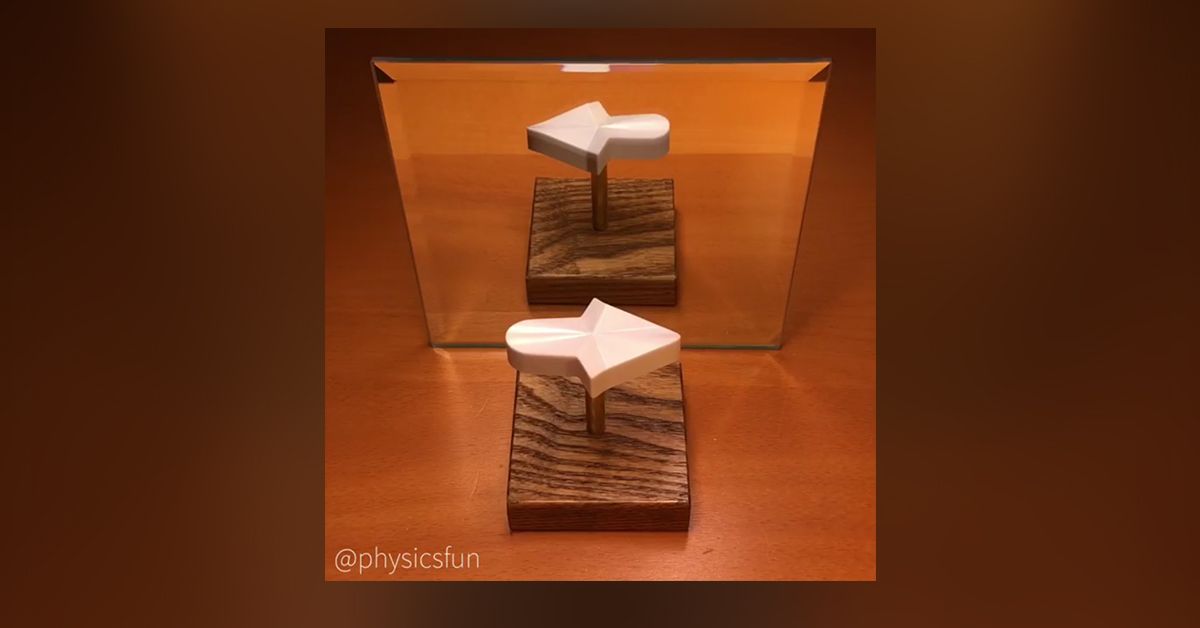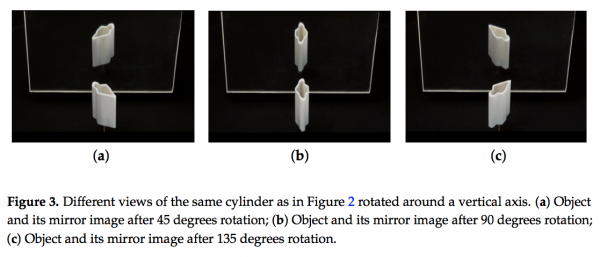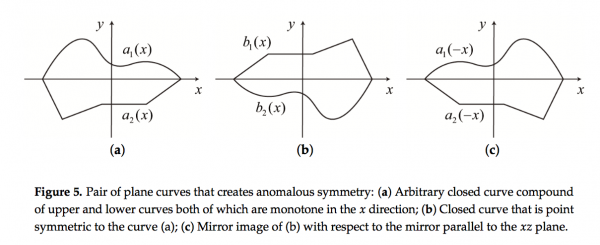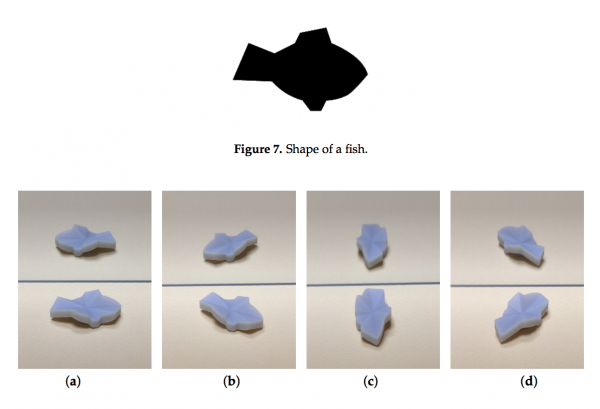On 30 April 2018, the Instagram account "physicsfun" posted a video of an optical illusion involving what appears to be an arrow that points to the right — even when you turn it 180 degrees and even when its reflection points in the opposite direction:
A number of readers have inquired about the nature of the illusion, wondering if possibly it was caused not by clever trickery, but by brute CGI. In fact, the video is real, and it is an especially impressive demonstration of what its creator has dubbed "anomalous mirror symmetry," and which is related to the ambiguous cylinder illusion.
The illusion was invented by Kokichi Sugihara, a mathematician at the Meiji Institute for the Advanced Study of Mathematical Sciences in Tokyo, Japan. He wrote a 2016 paper for the journal Symmetry that explained the deception, which aims to create illusions that appear to break the laws of optical physics by forcing mirrors to reflect what appears to be the opposite of what would normally be reflected
In this paper, we propose a new concept of symmetry, which we call “anomalous mirror symmetry” (“anomalous symmetry” for short). The anomalous symmetry is a modification of mirror symmetry, but it does not obey the law of optical physics [and therefore] cannot be realized in a purely physical manner.
However, we show that anomalous symmetry can be generated if we employ [the] ambiguous cylinder illusion. We characterize the class of cylinders whose mirror images generate anomalous symmetry and moreover the same anomaly is preserved even if the objects are rotated around a vertical axis.
The process of making a physical object that appears different at certain viewing angles is complex, involves heavy math, and usually a 3D printer. To get a sense of that process, the paper shows a model of the same basic arrow at three points of rotation:
The interplay between what our eyes perceive at this angle and the physical reality of what is actually present stems, generally speaking, from manipulating our eyes to read curved lines as straight ones by capitalizing on our brain’s poor ability to register depth. This is further aided by lighting designed to obscure specific shadows and surface features. To get a basic sense of what Sugihari is selling as an arrow, it helps to look at what the “arrow” would look like from a bird’s eye view:
Sugihara has also demonstrated that a variety of other shapes can be designed to achieve this kind of “anomalous symmetry”. Here, for example, is a fish that is bravely appearing to break some optical physics laws:
Because researchers have made these objects a reality and published their methods in peer-review papers, we rank the authenticity of this video as true.




